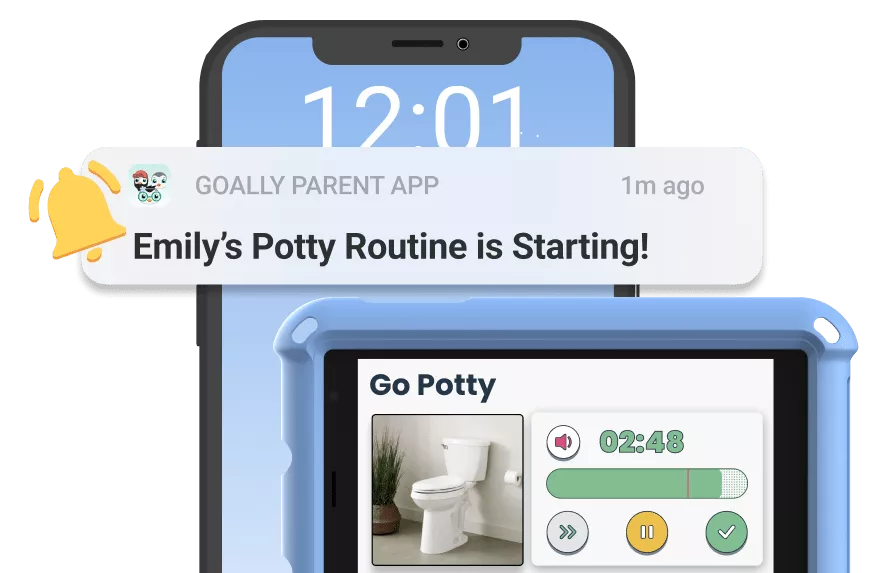A bedtime routine is a set of consistent activities that assist in getting your children ready for sleep. Creating the ideal bedtime routine creates a relaxing and structured atmosphere for winding down, assuring an uninterrupted sleep for all.
Key Takeaways:
- Create a consistent schedule for bedtime activities
- Incorporate soothing activities like reading or listening to calm music
- Limit screen time and stimulating activities before bed
- Maintain patience and flexibility as kids adjust to the routine
So how do you make the best bedtime routine? The best bedtime routine for kids is one that promotes relaxation and consistency. Establish a predictable routine that includes calming activities, and make sure to stick with it nightly. This consistency helps children feel secure and ready for bed.
Table of Contents
Why a Bedtime Routine Matters
Bedtime routines are essential for children because they establish a sense of security and predictability. Neurodivergent kids, especially those with autism or ADHD, thrive on routines, as transitions can be overwhelming. Studies have shown that consistent bedtime practices can lead to improved sleep patterns, which, in turn, positively impact behavior and cognitive function during the day.
When you think about it, even as adults, we have little rituals to wind down after a long day. Creating a structured bedtime environment helps kids feel safe and ready for rest. Plus, you get a more peaceful evening!

Read More: Autism & Sleep- What to Know and How to Help
How to Start the Best Bedtime Routine
Starting a bedtime routine might feel daunting, but trust me, it’s not as hard as it seems. Here’s a step-by-step guide to help you get started:
- Set a specific bedtime: Decide on a time when your kids should be asleep, then work backward to determine when to begin the routine.
- Create a calming environment: Dim the lights, play soft music, or use a white noise machine to signal it’s time to relax.
- Limit stimulating activities: Avoid screens and exciting games an hour before bedtime. Instead, choose calming activities like reading a book or discussing the day.
Neurodivergent kids often benefit from visual schedules or checklists to help them follow the bedtime routine. Tools like Goally’s visual schedules can be handy for parents managing bedtime routines with kids with different thinking and learning styles.
| Goally Feature | How It Works | Example |
|---|---|---|
| Bedtime Routine | Kids follow step-by-step visuals to get ready for bed. |  |
| Rewards | Kids earn points by completing their bedtime routine! |  |
| Sleep Mode | Kids choose their own night light and sound machine. |  |
| Morning Alarm | Goally wakes kids up without needing mom’s help. |  |
Creating the Perfect Bedtime Routine for Neurodivergent Kids
For parents of neurodivergent kids, a little flexibility goes a long way. For example, kids with sensory sensitivities might prefer a quiet story over music or need extra time brushing their teeth. The goal is to create a routine for your child’s unique needs.
One thing I’ve noticed in my practice is that kids with ADHD often struggle with settling down. In these cases, it’s important to set expectations early. Instead of saying “It’s time to sleep now,” which can be frustrating if they’re not tired, try giving them an activity like stretching or listening to a calming podcast to signal bedtime without making them feel pressured.
The Science Behind Bedtime Routines
Did you know that research from the American Academy of Sleep Medicine shows that kids with consistent bedtime routines fall asleep faster and experience fewer night awakenings? It’s because routines help regulate the body’s internal clock (the circadian rhythm).
Moreover, studies suggest that a good bedtime routine leads to better cognitive performance the next day. This means well-rested kids perform better at school, are more focused, and handle emotions more effectively. Pretty cool, right?
What to Include in Your Bedtime Routine
Your routine doesn’t need to be complicated. In fact, the simpler, the better. Here’s a basic outline:
- Bath or Shower: Warm water helps to relax muscles, preparing the body for rest.
- Brush Teeth: A non-negotiable step that reinforces the importance of self-care.
- Quiet Time: This could be reading a book, telling a story, or engaging in light conversation about the day.
- Bedtime: Lights off at the agreed-upon time, with any comfort items (like a favorite blanket or stuffed animal) nearby.
For neurodivergent kids, adding specific sensory-friendly activities like a weighted blanket or calming fidget toy can also be effective. This keeps bedtime structured but flexible enough to suit their needs.

Read More: How to Put a Kid to Sleep in 40 Seconds
How to Handle Bedtime Challenges
Let’s be honest, no bedtime routine is perfect, and there will always be nights when things go off the rails. Handling bedtime challenges requires patience, whether it’s an outburst or a refusal to sleep. One key tip? Stay consistent. If your child refuses to brush their teeth or wants to stay up late, calmly explain that sticking to the routine helps them feel better the next day.
Sometimes, bending the rules a little is okay. If they’re anxious or upset, allow an extra story or five more minutes of cuddle time. The important thing is to create a positive association with bedtime.
Signs Your Routine Might Need Adjusting
If your child consistently struggles with going to bed, it might be time to reassess the routine. Look for signs like:
- Frequent bedtime resistance
- Trouble staying asleep
- Mood changes or irritability during the day
When you see these signs, it’s important to tweak things. Maybe they need a longer wind-down period, or the routine is too stimulating. Trial and error will help you find what works best.
Goally | Apps To Structure Your Kiddo’s Routine
Does your child struggle with transitions or staying on task? Goally’s visual schedule app breaks down large tasks into small, achievable steps. It helps kids complete their tasks independently!
Developing the best bedtime routine takes time, but it’s worth it. Start simple, stay consistent, and adjust based on your child’s needs. A good night’s rest leads to better days for everyone. Remember, the key is to make the routine predictable and flexible enough to suit your family.
Resources:
FAQs About Bedtime Routines
What is a bedtime routine?
A bedtime routine is a series of steps that you and your child follow before bed. It can help your child wind down and relax, and it can also help them fall asleep more easily. A typical bedtime routine might include brushing teeth, putting on pajamas, and reading a story.
Why is a bedtime routine important for kids?
Because children who go to bed and wake up at the same time each day, which is a routine, tend to sleep better overall. It can also help children wind down, establish a sense of security, and signals to their bodies that it's time to sleep.
What are some examples of calming activities for a bedtime routine?
Reading a book, taking a warm bath, practicing relaxation exercises, or engaging in quiet play can help children relax before bed.
Should I include screen time in my child's bedtime routine?
It's best to avoid screen time close to bedtime as the blue light emitted from screens can interfere with sleep. Opt for calming activities instead.
What are some tips for creating a bedtime routine?
Here are some tips for creating a bedtime routine: Start by choosing a time that works for you and your child; Create a routine that is consistent and predictable; Keep the routine simple and age-appropriate; Make sure the routine includes relaxing activities; Avoid screen time in the hour before bed; and Create a calm and relaxing bedtime environment.
How long should a bedtime routine be for kids?
A bedtime routine can vary in length, but generally, aim for about 30 minutes to an hour to allow enough time for winding down and transitioning to sleep.
This post was originally published on 10/10/2023. It was updated on 09/26/2024.

Hennah is an experienced writer and researcher, helping children with autism, ADHD, and other neurodivergent conditions. As a blog contributor for Goally, she combines her deep understanding of neurodiversity with practical advice, offering valuable insights to parents and educators.






